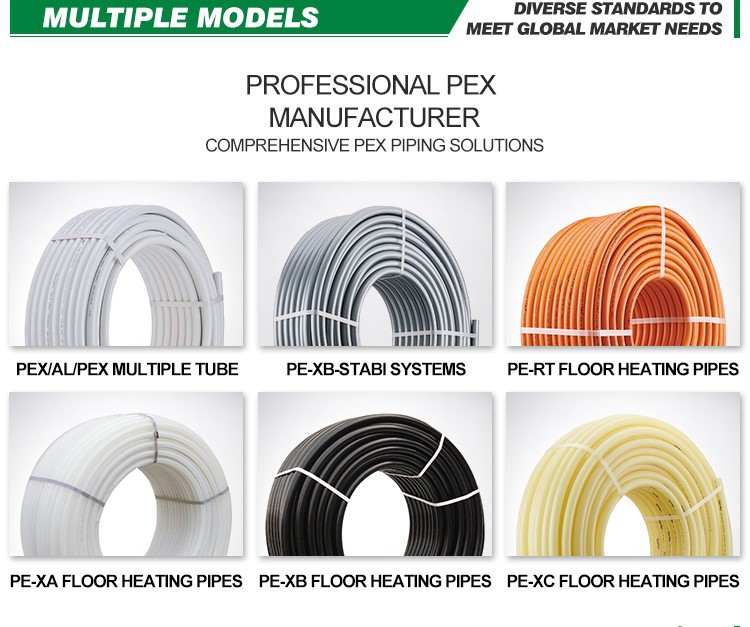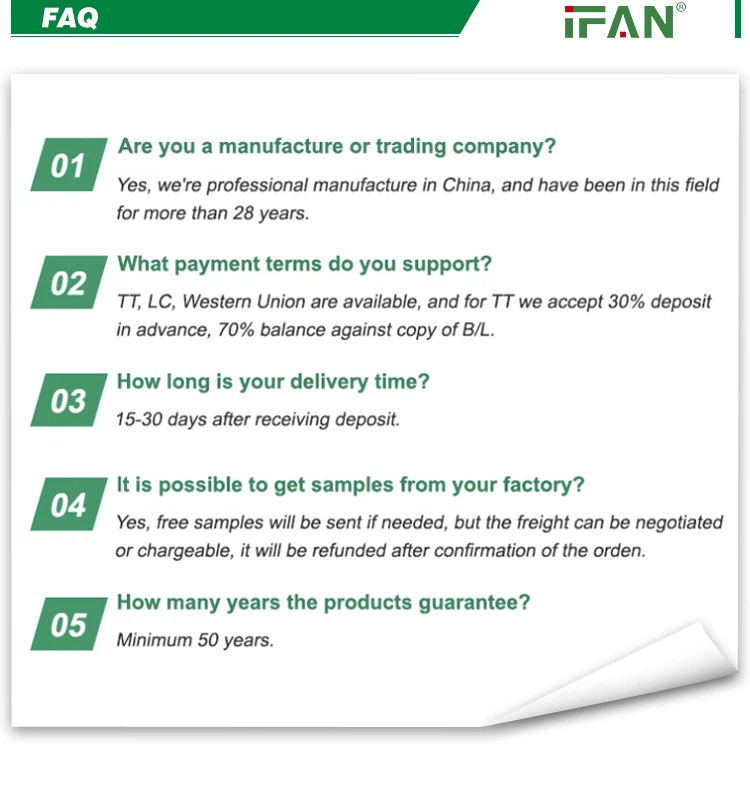High Pressure ASTM F2623 Pex Pipe
Brand: IFAN/OEM
Applications:Potable Water Systems/Radiant Heating Systems/Hydronic Heating Systems/HVAC Systems/Geothermal Systems
Color:White,Bule,Yellow,Orange,Grey,Red,Purple Or Customized
Introduction:
PEX is a flexible plastic pipe that can be laid over long distances without many connections, which reduces the likelihood of leaks. The flexibility and expandability of the plastic pipe prevents cracking due to freezing temperatures.

| Product Name | IFAN PEX Pipe |
| Standard | ASTM F2623,BS EN ISO 22391,DIN 16833,GBT28799,ISO 22391 |
| Size | 16-32mm |
| Color | White,Bule,Yellow,Orange,Grey,Red,Purple Or Customized |
| Connection | Compression/Press/Sliding Fittings |
| Length | 100-500M per roll |
| Sample | Sample Free |
| Contact | Click HERE to contact us now! |
Welcome to contact IFAN, we are online 24 hours a day to answer your questions!

1. Understanding PEX Material and Its Recyclability
PEX (cross-linked polyethylene) fittings are widely recognized for their durability and versatility in plumbing systems. However, when it comes to recycling, the characteristics of PEX present both opportunities and challenges. PEX is a type of polyethylene that has been chemically or physically altered to enhance its performance, such as increased temperature resistance and flexibility. This cross-linking process complicates the recycling of PEX materials because it changes the polymer structure, making it less straightforward to process compared to non-cross-linked polyethylene. Despite these challenges, PEX materials can indeed be recycled, though the process requires specialized facilities and methods.
2. Current Recycling Practices for PEX Fittings
Recycling PEX fittings involves several steps to handle the material's unique properties. Specialized recycling centers are needed to process PEX, as conventional plastic recycling facilities may not be equipped to handle cross-linked polymers. The recycling process typically includes shredding the PEX into smaller pieces, which are then subjected to specific treatments to break down the cross-linked structure. After treatment, the material can be reprocessed into new products, such as construction materials or non-plastic items. Although this process is more complex and less common than recycling other plastics, efforts are increasing to improve PEX recycling infrastructure and capabilities.
3. Challenges in PEX Recycling
One of the primary challenges in recycling PEX fittings is the cross-linking process that enhances their properties but complicates recycling. Unlike standard polyethylene, cross-linked polyethylene has a network of bonds that cannot be easily re-melted or re-formed. This means that traditional plastic recycling methods, which involve melting and reforming, are not suitable for PEX. Additionally, the specialized equipment required for PEX recycling is less common, and the process can be more costly and labor-intensive. These factors contribute to lower recycling rates for PEX compared to other, more easily recyclable plastics.
4. Innovations in PEX Recycling Technology
Recent advancements in recycling technology are addressing some of the challenges associated with PEX fittings. New methods are being developed to better handle cross-linked polymers, including chemical recycling processes that break down the polymer chains more effectively. These innovative technologies aim to make PEX recycling more efficient and cost-effective. For example, researchers are exploring advanced depolymerization techniques that can revert cross-linked polyethylene to its base components, which can then be reused. These innovations hold promise for increasing the recyclability of PEX and reducing its environmental impact.
5. The Role of Manufacturers and Policy in Enhancing Recyclability
Manufacturers and policymakers play a crucial role in improving the recyclability of PEX fittings. Many manufacturers are investing in research to develop more sustainable PEX formulations that are easier to recycle or are working on systems to facilitate the recycling of PEX waste. Additionally, policy measures such as extended producer responsibility (EPR) programs can incentivize manufacturers to take responsibility for the end-of-life management of their products. These policies can help establish more comprehensive recycling systems and promote the development of better recycling technologies. As these efforts progress, the overall recyclability of PEX fittings is expected to improve, contributing to a more sustainable lifecycle for these materials.







Hot Tags: high pressure astm f2623 pex pipe, China high pressure astm f2623 pex pipe manufacturers, suppliers, factory, CPVC 45 Elbow, PPR Double Union Ball Valve, Brass Compression Fitting Socket, HDPE Male Tee, PPR Crossover, PPR Ball Valve
Send Inquiry





